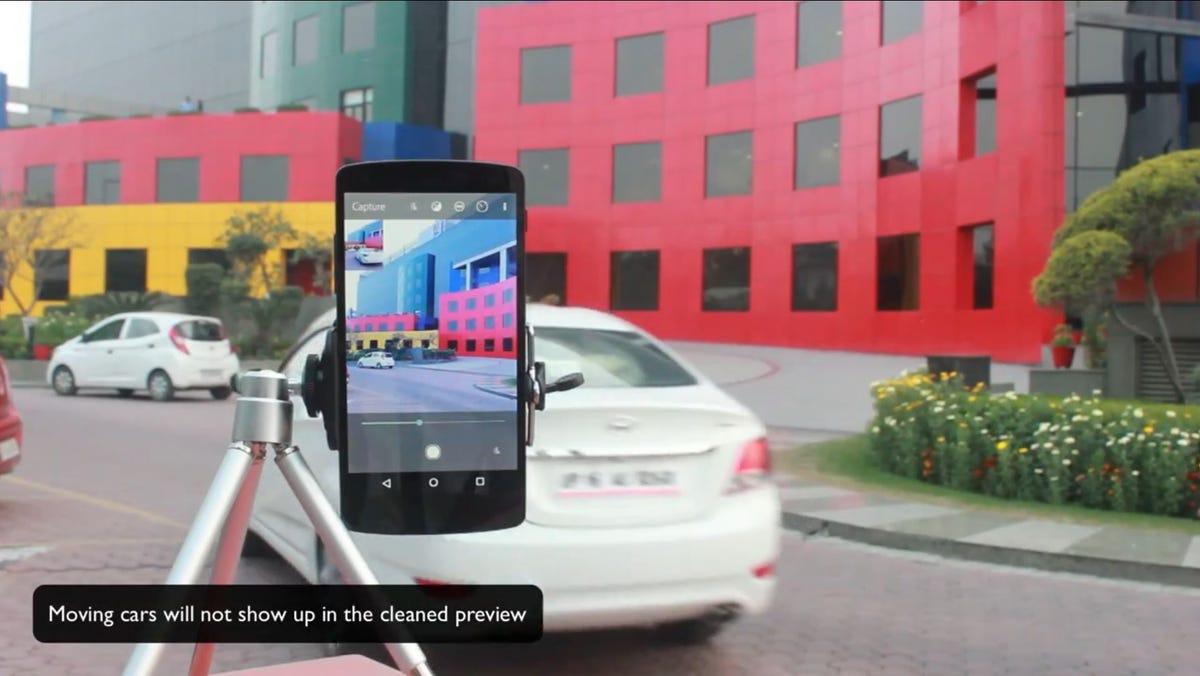 Enlarge Image
Enlarge ImageAdobe Systems / photo by Elizabeth Lippman
Photoshop experts have long been able to whisk tourists away from their pictures by combining multiple shots. Now Adobe Systems has packaged that technique called monument mode into a prototype app for smartphone cameras.
Monument mode analyzes video of a scene and separates what is transitory — tourists or cars, for example — from what is permanent. The result, should the company choose to turn the technology into a product, is a cleaner view of the Taj Mahal, Eiffel Tower or any other landmark usually cluttered with and obstructed by humans.
The prototype was one of several of Adobe’s “sneaks” research projects shown off in Los Angeles on Wednesday, the final day of the company’s annual Max conference for designers, producers, animators, photographers and digital artists. Adobe hasn’t committed to turning all the features into products, but several past sneak preview projects have become reality, such as the “dehaze” feature newly added to the Lightroom and Photoshop tools for editing photos.

 Enlarge Image
Enlarge ImageAdobe Systems
The demonstrations were geared to convince the audience that San Jose, California-based Adobe is the source of the sort of computational cleverness that will keep their creative juices flowing. Adobe has to keep those customers coming back, paying annual subscription fees of $600 and up for the full set of Adobe’s Creative Cloud design tools and services.’
In recent years, Adobe has been scrambling to adapt to smartphones and tablets by offering a shifting set of creative tools that extend beyond the PC. Several of the sneak-peek technologies it showed Wednesday relied on phones or tablets.
Among the other technologies demonstrated:
Project Faces is a tablet app that lets people create a custom font by fiddling with a wide range of sliders. They can change letters’ boldness, slant, curvature and width; add and refine serifs; and add effects like a 3D appearance, hand-drawn jitter or stencil look. The result can be exported as a graphic element or a complete font.
3D portrait technology identifies facial features in photographs and automatically creates a 3D sculpture version of a person’s head. Adobe demonstrated it with “Parks and Recreation” actor Nick Offerman.
A photobomb-defusing tool analyzes a photo and spotlights elements that could be distracting. A slider wipes them out, starting with the items the tool finds most distracting.
Project Dollhouse analyzes a photograph to find lines of perspective and lets artists create a drawing whose elements snap into alignment with that perspective.
Extract shading is a Photoshop feature that can analyze lighting sources in a photo, then isolate shadows. That lets people can edit just those shadows or apply that shading to another photo.
Louper is a new visual take on image search. Instead of trying to find the right words to describe subjects, backgrounds, colors and other elements, people can start with a similar photo as a starting point. Louper will analyze it to find similar images among those in the Behance social network Adobe offers for digital artists.
DeepFont visually identifies typefaces from the thousands available so designers can use one they like even if they don’t know its name.




